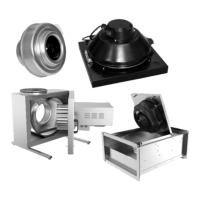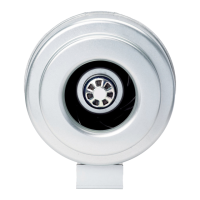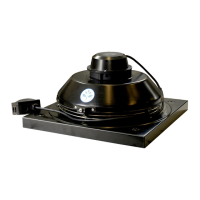systemair 51
Maintenance
Regularlycheckthesoilingoftheblades,andcleanorreplacetheeliminatorifnecessary,asfollows:
• Slide the eliminator out.
• Clean the blades with a scale removal agent.
• Checkthesealingandreplacethemifnecessary.
• Inserttheeliminatorbackintothecasing.
3.7.6 Steam heating coil
Piping connection
• Steamandairmustmoveinacounterowconguration.
• Mountthesteamheatingcoilinaverticalposition–withthenpackagetubingrunningvertically.Connectthesteam
supplyonthetop,withthepipepitchedtowardstheheatingcoil.Theconnectionpipesandpipettingsmustnot
restrict heater thermal expansion.
• Consideringthedirectionoftheairow,connecttheheatexchangerpipingsothatairinletintotheheatexchangeris
closertothereturnpipe,toensuresteam-aircounterow.
• Tofacilitatedismounting,connecttheheatingcoilbymeansoftwopairsofanges.Donotapplyweldingjoints.
• Downstream from the connection shut-off valve, as well as at the heat exchanger inlet and outlet, install temperature
sensors.
• Install a liquid draining valve at the lowest point of the piping installation. This will facilitate heating coil draining. At
thehighestpointofthepipingsystem,makeprovisionsforventing,toensureanunobstructedowofsteamthrough
the heat exchanger.
• Provide for uniform temperature and incoming air distribution across the heat exchanger cross section, to avoid
damaging the steam register due to water hammer effects in the parts of tubing exposed to higher thermal stress. At
lowertemperatures,theremaybeariskofcondensatefreezingincertainpartsoftheheatexchanger.
• Duetotheriskofwaterhammer,donotattempt,underanycircumstances,tocold-startthesteamheatingcoil
orcontrolitsoperationbyoodingitsinternalsurface.Suchoperationmayalsoresultinmarkedlynon-uniform
distribution of the outlet air temperature.
Subcooledcondensateintheoodedheatingcoilsectioncauseslargestressesinthestructureandwaterhammer.
Thisisparticularlylikelytooccuratlowinletairtemperatures.Assteamcomesintocontactwithsubcooled
condensate, steam bubbles abruptly collapse and cause implosions.
• Ensure safe, continuous and prompt draining of the condensate by properly pitching the condensate pipe towards
the condensate collector. The condensate collector must be mounted so as to prevent the retention of condensate
in the heating coil. It must always be installed below the lowest point of the steam heating coil. The diameter of the
pipe connecting the condensate collector to the heating coil must not in any case be less than the diameter of the
condensate collector pipe, in order to avoid the phenomenon of subsequent evaporation. Follow the condensate
collectormanufacturer’sinstructionsforcorrectsizingandinstallationofthecondensatecollector.Onlyuseoat-type
condensate collectors with continuous condensate discharge.
• Inthecaseofautomaticairtemperaturecontrol,thereisariskofproblemsinthesteamheatingcoilduetoadrop
in the pressure differential in the condensate collector. In order to avoid this, installation of an additional gravity
condensatepumpisrecommended.Withcongurationsfeaturingmodulatedsteampreheaters,useofagravity
condensate pump is mandatory.
• Inordertoensuresmoothoperationofthesteamheatingcoil,makesuretosupplyitwithdrysaturatedsteam.Use
ofsuperheatedsteamresultsindecreasedefciency,whilewaterdropletsinwetsteamdamagepipewalls.The
steam composition must meet the requirements of the applicable standards. Pay particular attention to the oxygen
andcarbondioxidecontent,whichmaycorrodeanderodetheheatingcoiltubes.Regularlycheckthesteamquality
in accordance with SIST EN 1861.
